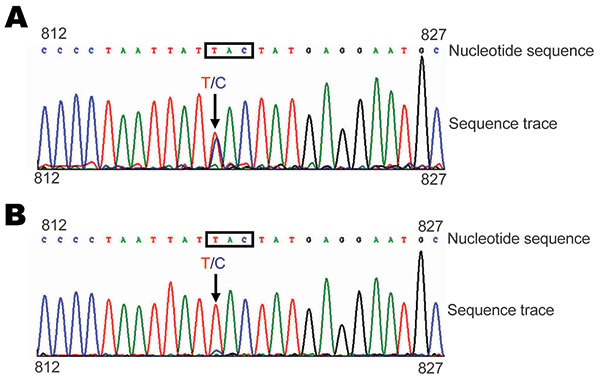Volume 15, Number 12—December 2009
Dispatch
Oseltamivir-Resistant Influenza A Pandemic (H1N1) 2009 Virus, Hong Kong, China
Figure

Figure. Neuraminidase (NA) 274Y (H3 subtype numbering) gene mutation in influenza A pandemic (H1N1) 2009 virus A/Hong Kong/2369/2009 isolated from a patient who arrived in Hong Kong, China, from San Francisco, California, USA, on June 11, 2009. A) NA sequence of virus amplified by reverse transcription–PCR and sequenced directly from a day 1 specimen of a nasopharyngeal aspirate from the patient. B) NA sequence of virus grown in MDCK cells. Nucleotide sequence represents identification of nucleotides by the sequencing machine, and the sequence trace represents the signal (peak) of each nucleotide in the sequencing reaction. Nucleotide coordinates (812 and 827) refer to the NA gene sequence of pandemic (H1N1) 2009 virus. Residue 274Y encoded by the 3-nucleotide codon is indicated in boxes and the nucleotide substitution (C→T for amino acid change H→Y) is indicated by arrows Colors of curves match those of specific nucleotides.